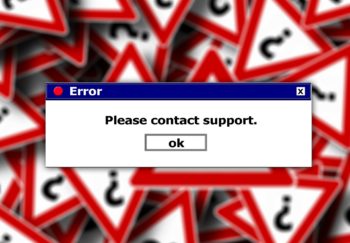Those Pesky Particles! Posted by eriko1 on Jan 14, 2021 in Grammar, Vocabulary
As a non-native English speaker, my biggest foe is the article (冠詞 kanshi). Yes, those “a” and “the” devils. When you ask native English speakers, they always say – if you refer to an item the first time, use “a” and after that “the”. Well, life is not that simple especially in English that is full of exceptions (例外reigai). I did learn about the articles in middle school (中学 chugaku)– there were many uses, but real life is more complicated (ややっこしい、複雑な yayakkoshii, fukuzauna).
And I learned that we, the Japanese, have the equivalent to (〜に相当する〜ni sotosuru) these pesky (厄介な yakkaina) articles. Allow me to introduce PARTICLES (助詞 joshi)! We, the native speakers, have no trouble but we have trouble explaining them. That is because we learn them in everyday life as we grow up and not by rules and formulas. Yes, we do learn them at school, but we perfect them outside the school without trying.
So what are the particles?They are short words that indicate relations of words within a sentence. Thanks to particles, Japanese sentence structures can be very flexible (自由に変えられる、フレキシブル、jiyu ni kaerareru). Look at the sentences below for an example. Particles are shown in RED.
Sunny and Paige watched a movie together in Shibuya on Sunday.
サニーさんとペイジさんは 日曜日に 渋谷で 映画を 見ました。
(Sunny-san to Paige-san wa nichiyoubini Shibuyade eigawo mimashita)
日曜日に サニーさんとペイジさんは 映画を 渋谷で 見ました。
渋谷で 日曜日に 映画を サニーさんとペイジさんは 見ました。
映画を 日曜日に 渋谷で サニーさんとペイジさんは 見ました。
サニーさんとペイジさんは 渋谷で 映画を 日曜日に 見ました。
日曜日に サニーさんとペイジさんは 映画を 渋谷で 見ました。
As you can see, an order of the words does not matter in Japanese as long as appropriate particles are used (of course, some word orders are more natural than others.) Thus, learning the particles is extremely important.
In any culture or country, comedians use stereotypes (ステレオタイプ). Non-Japanese comedians often use our inability to distinguish R and L sounds, and the nervous mysterious laughs to mimic (真似する, からかうmanesuru, karakau) Japanese. So what do the Japanese comedians do to imitate non-native Japanese speakers other than pronunciation and intonations? When they imitate non-native Japanese speakers, they use Japanese without particles. I am sure they are not aware of such grammatical traits.
I have seen beginner Japanese students struggle with (苦労するkurosuru) particles. It must be very frustrating, I know! I wanted to help because I did not want them to get so frustrated (イライラするirairasuru) that they would lose interest. But just like the pesky English articles, there is no easy way. But if you can get the basic understandings down, you are already winning!
は (ha) is pronounced as wa when used as a particle. It is the first particle that most learners encounter.
A はBです。A is B, A=B
私は 大学生です。watashiha daigakuseidesu. I am a college student.
これは 本です。korewa hondesu. This is a book.
Simple, right? It is the same as “This is a pen.”
の connects two nouns.
私 の 犬 (watashi no inu: my dog)
Noun1 Noun2
私 の まち (watashi no machi: my town)
Noun 1 restricts and specifies, while Noun 2 is a main idea.
私 の 犬 は しば犬です。(watashi no inu wa shibainudesu: my dog is shibainu. )
N1 + N2 can be treated as a noun.
も(mo)
1) The second item shares a common attribute. AはCです。BもCです。A is C, and B is C, too.
りんごは果物です。バナナも果物です。
An apple is a fruit. Banana is a fruit, too.
2)Two or more people perform the same activity.
サニーさんはシアトルに行きました。ペイジさんもシアトルに行きました。
Sunny went to Seattle. Paige went to Seattle, too.
Watch out for particles other than は, が, を. They can be used with もrather than being replaced by it.
私は京都に行きました。大阪にも行きました。
I went to Kyoto. I went to Osaka, too.
私はカフェでコーヒーを飲みました。うちでも飲みました。
I had coffee at a café. I had it at home, too.
サニーさんはニューヨークに行きました。ダラスへも行きました。
Sunny went to New York. He went to Dallas, too.
を:direct object – things that are directly involved in, or affected by, the event.
コーヒーを飲みます。(ko-hi-o nomimasu, I drink coffee.)
映画を見ました。(eigao mimashita. I saw a movie.)
で: place of action. Where the event described by the verb takes place.
図書館で本をよみます。(toshokan de hon o yomimasu, I read a book at a library.)
に:
1)Goal of Movement, interchangeable with へ (pronounced as ‘e’)
学校に行きます。学校へ行きます。(gakkoni ikimasu, gakkoue inimasu, I go to school.)
2)the time at which an event takes place
十二時に寝ます。
日曜日に行きます。
Here are some occasions you do not use に.
毎日食べます。
今日行きます。
今晩にテレビを見ます。
いつ来ますか。
週末(に)行きます。
へ pronounced as ‘e’:Goal of Movement, interchangeable with に
I just scratched the very surface of the world of particles from a beginner textbook. You cannot avoid the particles, so my advice to you is to invest your time to understand basics, and do many “fill in the blank” type of questions. And do not get frustrated and discouraged! Learning a foreign language is difficult but so rewarding.

Build vocabulary, practice pronunciation, and more with Transparent Language Online. Available anytime, anywhere, on any device.








Comments:
lee:
nice, clear explanations
the sentence “I had coffee at a cafe, I had it at home too”. Should be “I had SOME at home too”.
Even better would be,
“I had a coffee at a cafe, I had one at home too.”
But you are very correct about how difficult it is to explain these nuances.
thank you
eriko1:
@lee Thank you, Lee, for your expert explanation via your 2 comments! Articles will continue to kick me until my last day on earth.
Lee:
there is no situation where you can say “I read a book at a library”
you would say “I read (reed) books at THE library”
you could say “I read (red) a book at THE library” in the past tense. But using “a library” in that case would raise curious questions in the listener’s mind.
or you can say “I’m going to read (reed) a book at the library”
Using the present simple tense to suggest “generally” doesn’t fit with a single book. Also, if you go there regularly then it is not “a” library, but “the” library that you usually go to.
jay:
Thanks for all the posts.
I think you have been a bit led astray with – When you ask native English speakers, they always say – if you refer to an item the first time, use “a” and after that “the”.
A is for a general, unknown or not needing to be specified item, The is when the speaker thinks the listener know which one they mean.
“I had a coffee at a cafe” is some sort of coffee at a cafe somewhere
“I had a coffee at the cafe” is some coffee at a place that is known in the context of the conversation
“I had the/that coffee at a cafe” is a coffee they have talked about before at some cafe.
A/some are for unknowns, the/that/those for known.
The one pronoun can be for both.
“Do you want a coffee?”
“No, I had one at a cafe earlier” – unknown coffee
“Yes, I’d like one please” – the known offered coffee
The one pronoun is very useful, but too much for here.
tldr, I waffle a bit, sorry